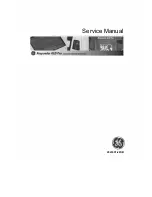
GUI reference
R&S
®
ZNB/ZNBT
339
User Manual 1173.9163.02 ─ 62
Coupling of data and memory traces
When a memory trace is generated from a data trace, it is displayed in the same dia-
gram area and inherits all channel and trace settings from the data trace. The memory
trace displayed in the active diagram; its properties are indicated in the trace list:
New memory traces are named "Mem<n>[<Data Trace>]", where:
●
<n> counts all data and memory traces in the active recall set in chronological
order
●
<Data_Trace> is the name of the associated data trace
Trace names can be changed in the
.
The following display settings of a data trace and the associated memory traces are
fully coupled
. Changing a property of one trace affects the properties of all other
traces.
●
All "Format" settings (see
Chapter 5.3, "Format softtool"
●
All "Scale" settings (see
Selection of the measured quantity (using the
) is possible for the data
trace but disabled for the memory traces.
Channel settings made for a memory trace act on the associated data trace. Some of
the channel settings for a data trace (e.g. the "Stimulus" range) also affect the display
of the memory traces.
If, due to a change of the sweep type, the stimulus type of a data trace changes, all its
memory traces are deleted.
Active Trace vs. Active Data Trace
In the context of memory traces we distinguish between the active trace and the active
data trace.
●
If the active trace is a memory trace, then the active data trace is the data trace to
which the memory trace is associated.
●
If the active trace is a data trace, then the active trace is also the active data trace.
Trace Config softtool
















































